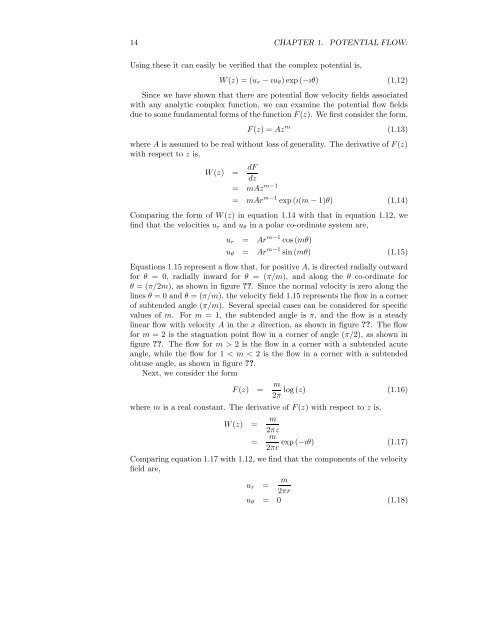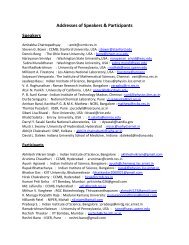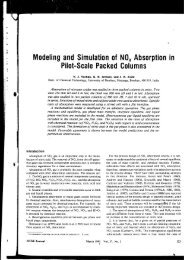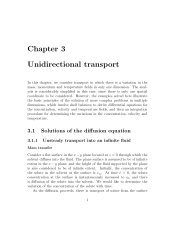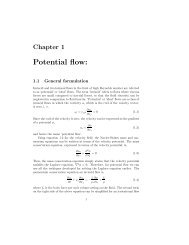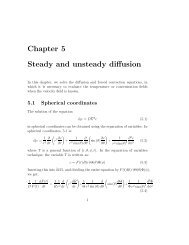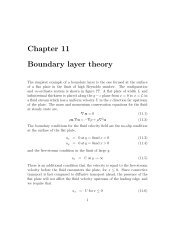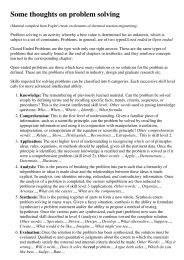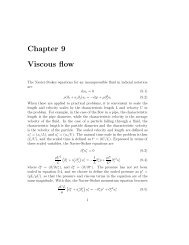You also want an ePaper? Increase the reach of your titles
YUMPU automatically turns print PDFs into web optimized ePapers that Google loves.
14 CHAPTER 1. POTENTIAL FLOW:Using these it can easily be verified that the complex potential is,W (z) = (u r − ıu θ ) exp (−ıθ) (1.12)Since we have shown that there are potential <strong>flow</strong> velocity fields associatedwith any analytic complex function, we can examine the potential <strong>flow</strong> fieldsdue to some fundamental forms of the function F (z). We first consider the form,F (z) = Az m (1.13)where A is assumed to be real without loss of generality. The derivative of F (z)with respect to z is,W (z) = dFdz= mAz m−1= mAr m−1 exp (ı(m − 1)θ) (1.14)Comparing the form of W (z) in equation 1.14 with that in equation 1.12, wefind that the velocities u r and u θ in a polar co-ordinate system are,u r = Ar m−1 cos (mθ)u θ = Ar m−1 sin (mθ) (1.15)Equations 1.15 represent a <strong>flow</strong> that, for positive A, is directed radially outwardfor θ = 0, radially inward for θ = (π/m), and along the θ co-ordinate forθ = (π/2m), as shown in figure ??. Since the normal velocity is zero along thelines θ = 0 and θ = (π/m), the velocity field 1.15 represents the <strong>flow</strong> in a cornerof subtended angle (π/m). Several special cases can be considered for specificvalues of m. For m = 1, the subtended angle is π, and the <strong>flow</strong> is a steadylinear <strong>flow</strong> with velocity A in the x direction, as shown in figure ??. The <strong>flow</strong>for m = 2 is the stagnation point <strong>flow</strong> in a corner of angle (π/2), as shown infigure ??. The <strong>flow</strong> for m > 2 is the <strong>flow</strong> in a corner with a subtended acuteangle, while the <strong>flow</strong> for 1 < m < 2 is the <strong>flow</strong> in a corner with a subtendedobtuse angle, as shown in figure ??.Next, we consider the formF (z) = m log (z) (1.16)2πwhere m is a real constant. The derivative of F (z) with respect to z is,W (z) = m2πz= m exp (−ıθ) (1.17)2πrComparing equation 1.17 with 1.12, we find that the components of the velocityfield are,u r = m2πru θ = 0 (1.18)


